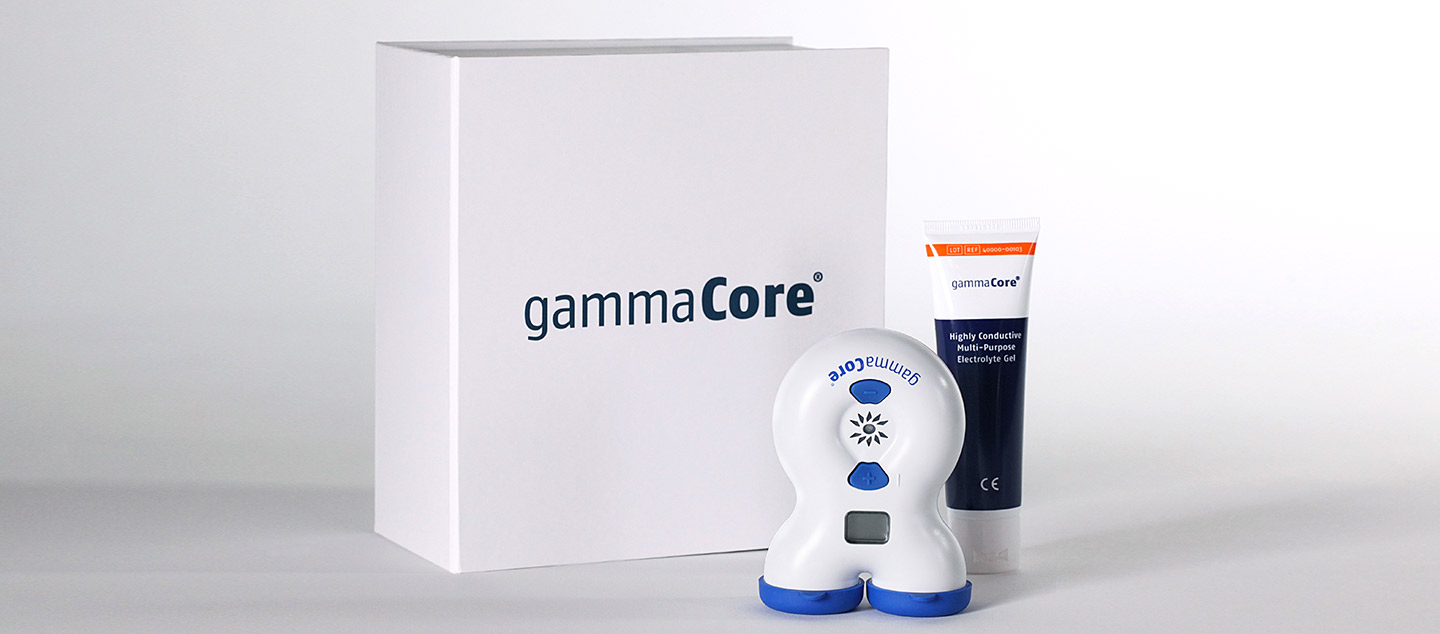
electroCore Receives 510(k) Clearance for gammaCore-S® (non-invasive vagus nerve stimulator) for the Acute Treatment of Pain Associated with Episodic Cluster Headache in Adult Patients
- Regulatory clearance marks most recent achievement in new device being available to the approximately 400,000 Americans living with episodic cluster headaches
Basking Ridge, NJ, June 15, 2017 – electroCore, a neuroscience and technology company dedicated to improving patient outcomes through technological advancement, announced today that the U.S. Food and Drug Administration (FDA) has granted 510(k) clearance to market a newer version of gammaCore® (non-invasive vagus nerve stimulator) – the gammaCore-S® – for the acute treatment of pain associated with episodic cluster headache (eCH) in adult patients. gammaCore transmits a mild electrical stimulation to the vagus nerve through the skin to block the pain signals that cause eCH.
“This clearance represents a significant milestone for electroCore as we are now one step closer to bringing gammaCore to patients in the U.S.,” said Francis R. Amato, Chief Executive Officer of electroCore. “By being able to market this version of gammaCore in the U.S., adult patients will now have access to a more user-friendly device, with the latest technology to treat pain associated with episodic cluster headache.”
gammaCore was released by the FDA for the acute treatment of pain associated with eCH in adult patients on April 14, 2017. gammaCore-S has been available in countries outside of the U.S., including the European Union, since 2015 and will be commercially available in the U.S. early in the third quarter of 2017.
About Cluster Headache
Cluster headache is a rare but extremely painful primary headache disorder characterized by recurring unilateral attacks.[i] The condition is the least common type of headache disorder, occurring in approximately 1 to 2 out of 1,000 individuals.i Cluster headache predominantly affects males, with symptoms typically manifesting by the age of 30.[ii] Frequently nicknamed “suicide headache” due to the severity of pain associated with their occurrence, cluster headache bouts occur rapidly and with variable frequency but often at the same time each year or day and are often more frequent at night.[iii] Those at greater risk of cluster headache include heavy smokers and those with a family history of the condition.i
About gammaCore®
gammaCore® is the first non-invasive, hand-held medical device applied at the neck that acutely treats the pain associated with episodic cluster headache in adult patients through the transmission of a mild electrical stimulation to the vagus nerve through the skin. Designed as a portable, easy-to-use technology, gammaCore can be self-administered by patients as needed to provide relief for the treatment of pain associated with episodic cluster headache without the potential side effects associated with standard of care. When placed on a patient’s neck over the vagus nerve, gammaCore stimulates the nerve’s afferent fibers which may lead to a reduction of pain in patients.
gammaCore is released/cleared in the U.S. for the acute treatment of pain associated with episodic cluster headache in adult patients. gammaCore is currently in use outside of the U.S., including in the European Union, where it is CE-Marked.
IMPORTANT SAFETY INFORMATION REGARDING GAMMACORE
- The safety and effectiveness of the gammaCore Noninvasive Vagus Nerve Stimulator has not been established in the acute treatment of chronic cluster headache.
- This device has not been shown to be effective for the prophylactic treatment of chronic or episodic cluster headache.
- The long-term effects of the chronic use of the device have not been evaluated.
- Safety and efficacy of the gammaCore device has not been evaluated in the following patients, and therefore is NOT indicated for:
- Patients with an active implantable medical device, such as a pacemaker, hearing aid implant, or any implanted electronic device
- Patients diagnosed with narrowing of the arteries (carotid atherosclerosis)
- Patients who have had surgery to cut the vagus nerve in the neck (cervical vagotomy)
- Pediatric patients
- Pregnant women
- Patients with clinically significant hypertension, hypotension, bradycardia, or tachycardia
- Patients should not use gammaCore if they:
- Have a metallic device such as a stent, bone plate, or bone screw implanted at or near their neck.
- Are using another device at the same time (e.g., TENS Unit, muscle stimulator) or any portable electronic device (e.g., mobile phone)
Note: This list is not all inclusive. Please refer to the gammaCore Instructions for Use for all important warnings and precautions before using or prescribing this product.
gammaCore is available by prescription only. U.S. Federal Law restricts this device to sale by or on the order of a licensed healthcare provider.
About electroCore
electroCore LLC is a U.S.-based neuroscience and technology company dedicated to improving patient outcomes through technological advancement and focused on developing non-invasive vagus nerve stimulation therapy for the treatment of multiple conditions in neurology, inflammation, and metabolic syndrome. The company’s initial target is the treatment of primary headaches (migraine and cluster headache) and the associated chronic co-morbidities of gastric motility, psychiatric, sleep, and pain disorders that drive disproportionately large direct and indirect costs within the healthcare system and society.
For more information, visit electrocore.com.
electroCore and gammaCore are trademarks of electroCore LLC.
Media Contact
Maura Siefring
GCI Health
(215) 837-8450
maura.siefring@gcihealth.com
[i] "Cluster Headache." The Migraine Trust. The Migraine Trust, n.d. Web. 30 Nov. 2016. https://www.migrainetrust.org/about-migraine/types-of-migraine/other-headache-disorders/cluster-headache/.
[ii] “Disease & Conditions: Cluster Headaches”; Cleveland Clinic. Cleveland Clinic, 2016. Web. 30 Nov. 2016 http://my.clevelandclinic.org/health/diseases_conditions/hic_Cluster_Headaches.
[iii] International Headache Society. Dodick. Cephalalgia. 2000;20:787. Rozen. Headache. 2012;52:99. Physician Interviews. ClearView Analysis.